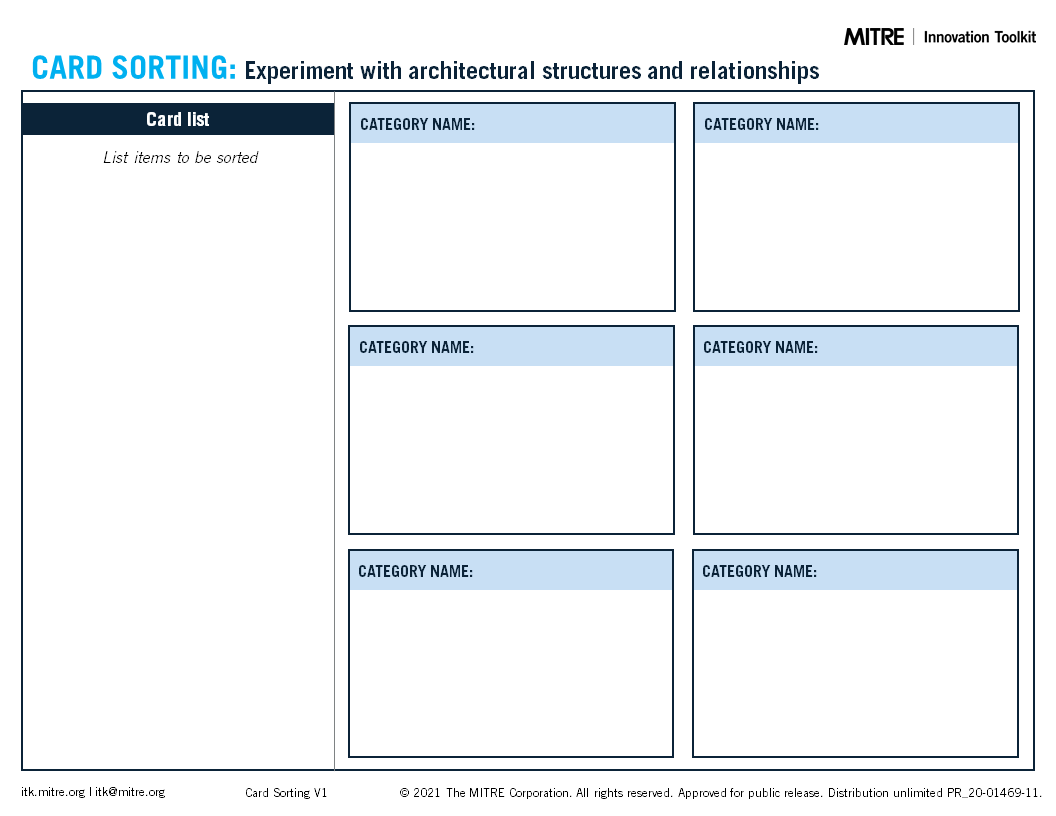Card Sorting |
 |
What is it
This hands-on activity allows participants to communicate and document their mental model and how they think about a set of information, creating a logical structure (e.g., relationships, sequences, timing).
When to use it
When you need to produce an information architecture, introduce structure into a large collection of data, or validate assumptions about how participants categorize information.
Why use it
- Determine how to organize and structure information that makes sense to users.
- Understand the mental models of an individual or a group of people.
- Explore and assess multiple arrangements and architectures.
Level
Advanced
Outcome
Understand
Group Size
4+ people
Suggested Time
45+ minutes
Card Sorting Worksheet

How to do it
STEP 1
Write or print the information onto index cards, paper, or labels. The information on the cards could be single words, phrases, or sentences. Mark each card with an identification number for easy documenting after the sort.
STEP 2
Create a set of category titles you think may help get the participants started, or provide blank cards for participants to create their own categories. Differentiate the category titles from the rest of the cards for the participants to sort.
STEP 3
Ask the participant to sort the cards one by one in a way that makes sense to them on a large, blank surface, using the existing categories and creating any categories they feel are missing. Asking the participant to speak through their sorting process can provide additional insights about how they think about the information at hand.
STEP 4
After the participants sort the deck, take a picture for your records and use the identification numbers to record the categories and card order. Shuffle the card deck between users to eliminate any card order biases.
STEP 5
After collecting sort results from all participants, look for trends such as common categories, cards that end up grouped together, or cards grouped under similar categories.
Benefits
Easy to visually rearrange items and pieces and quickly test out different structures, discover connections, etc.
Challenges
Allowing participants to openly define the categories can sometimes lead to a large variety of labels that can be difficult to consolidate.
Combine With
- Mindmapping to come up with a large amount of ideas to sort
- Trimming to narrow down the amount of cards to sort
- Lotus Blossom = Card Blossom
- Journey Map = Journey Sorting
